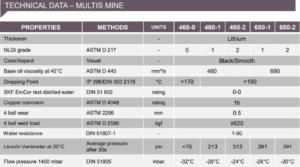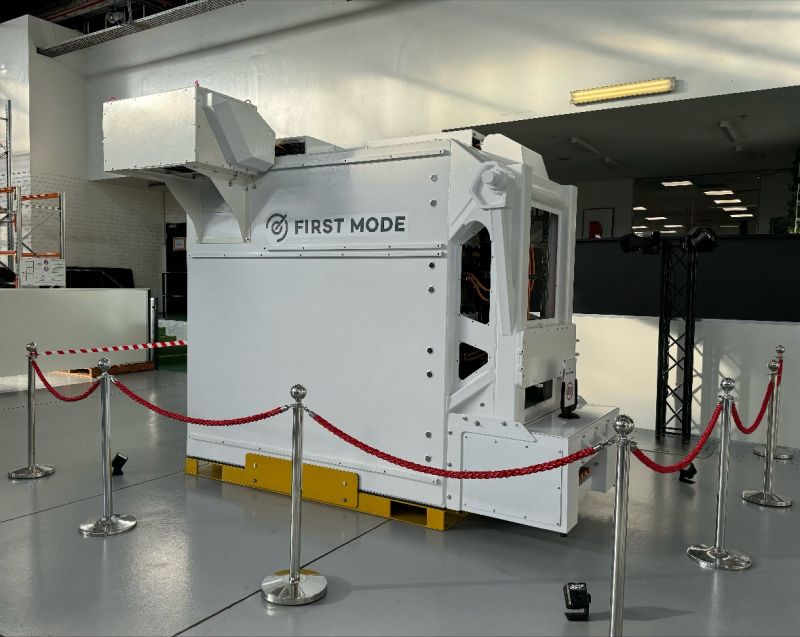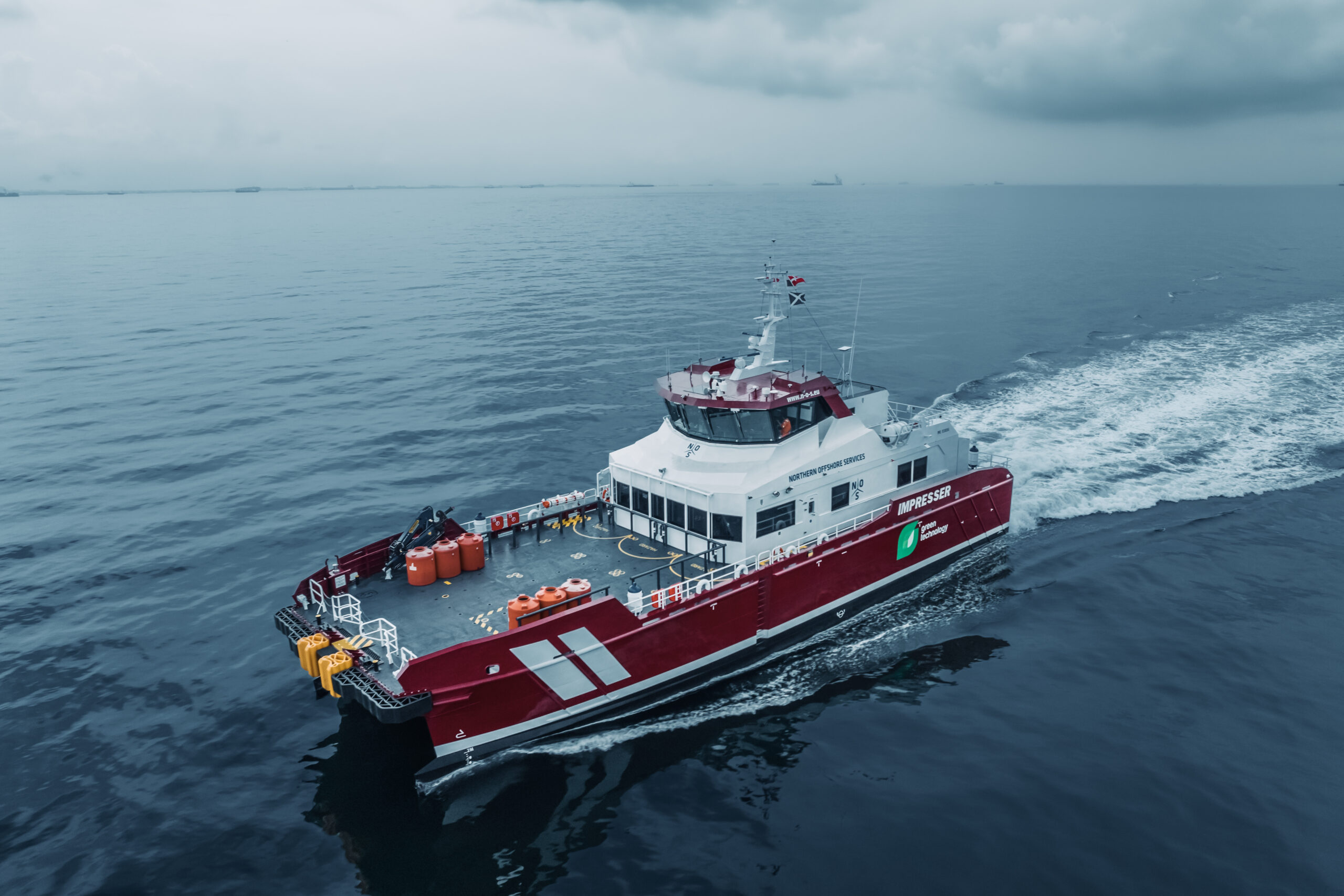High and low temperatures, harsh conditions, heavy loads, high and low speeds, water, shock loads and vibrations and many other conditions are seen by mining operations around the world.
That means, for the mining industry, greases are one of the key elements to ensure reliability of critical equipment and significant advantages can be gained by choosing the correct grease.
Grease in mining
Mining equipment can be divided into two categories: mobile and fixed plant. This means that greases are expected to lubricate many different types of components such as bearings and open gears.
Depending on conditions and applications, the choice of the right grease is crucial in keeping equipment running for extended periods and with reliability.
TotalEnergies has a full range of greases available for mining operations of all types. The greases range from standard, straight, Lithium EP NLGI 2 to specialty open gear greases.
This article will highlight the different components that contribute to the composition of a grease and the impact of the process and formulation on the final product.
Grease development
In the last three years, TotalEnergies Research and Development Centre has explored and tested hundreds of formulations of mining greases.
The mining industry might seem like a mature market with proven solutions for equipment lubrication, however, this is what Kodak thought in 1975 when digital photography appeared on the market. They thought hard printed film photography was the most proven and efficient technology and that there was no need to keep on innovation.
But mining operators are still challenging greases that have been in use for decades and are constantly asking questions such as:
- Are Lithium complex greases really needed for mining equipment?
- Is 5 per cent Molybdenum Disulfide (MoS2) content really necessary to protect the equipment or do we pay for useless add-on?
- What is the real influence of the NLGI grade on performance?
The absolute truth, which every grease manufacturer would agree to, is that mining greases are full of compromises.
Unlike multipurpose applications, mining equipment is subjected to extreme loads, shocks, vibrations, dust and water contamination and huge temperature variations. Because of slow movement, hydrodynamic lubrication is almost never achieved, meaning that metal to metal contact is almost inevitable.
As an example, in winter, the grease needs to be pumped effectively from service trucks, through 20- meter long pipes and in summer, it is also expected to stay in place in pins and bushes or on girth gears in 40°C conditions.
For this reason, many mining companies use different products during winter and summer seasons. Occasionally, even three different NLGI grades of greases may be used.
In fact, the problem is that the perfect grease doesn’t exist and when a choice of thickener, base oil and additives is made, it will not achieve full performance for every criterion as seen on the graph below. These criteria are the translation of requirements for equipment protection and effective grease delivery.
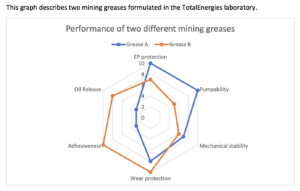

To illustrate the compromise that must be made, each parameter is placed opposite to its counterpart. For example, by improving adhesiveness by adding heavy polymer or increasing soap content, the pumpability will decrease accordingly. Certain polymer technologies can help reducing the counter effect on pumpability, but they do come with high cost and may have other limitations.
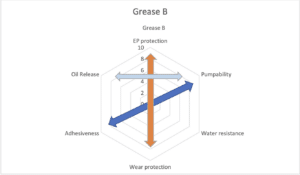

Extreme pressure (EP) additives will also compete with anti-wear additives on component surfaces. For example, adding too much EP additive to achieve maximum protection, will decrease the effect of the anti-wear additive as is demonstrated below.


For this example, the load wear index (LWI) is also an important parameter to review when looking at 4-ball weld load results. LWI is a measure of the relative ability of a lubricant to prevent wear under applied loads.
TotalEnergies has observed greases that don’t pass 500kg 4-ball Weld Load but then don’t weld at the higher 620kg. This “hole” in the EP performance can be spotted by looking at LWI results that will be relatively low.
Soap content
Although the amount of soap contained in the grease never appears on the Technical Data Sheets, it does however have an enormous influence on the NLGI grade, pumpability and adhesiveness.
The percentage of soap is directly linked to the consistency of the grease, i.e the NLGI grade. The graph below shows the typical quantity of lithium soap used for manufacturing different grades of straight lithium, EP grease.
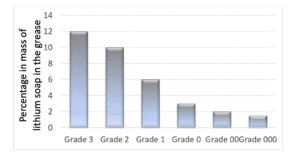

Manufacturing process
Manufacturing a grease is a lot more complicated than blending a lubricant, even engine oils. Just like baking a cake, timing is everything. Many grease manufacturing plants try to reduce their production time to maximise volume output. But every respecting starred chef in its kitchen will tell you that by not heating and cooling effectively, this can have a significant effect on the overall quality of the final product.
Similarly, for greases, the same rule applies to get the perfect reaction between the alkaline (lithium, aluminium, calcium) and the acid components.
For this, the temperature needs to be controlled down to within +/- 2°C and the cooling rate must be managed minute by minute, for every batch. TotalEnergies is one of the leaders in grease manufacturing and pioneered the Calcium Sulfonate Complex grease, namely the CERAN range.
Contamination
Unfortunately, no additive can protect a grease against cross-contamination. In the industry, aluminium greases are the most common types of greases for girth gears.
They have a great rheological behavior insuring good pumpability and good adhesiveness. Whilst on the other hand, lithium-based greases are used predominantly in pins & bushes and bearing applications.
The issue is that these two thickener types of grease are completely incompatible.
So what does happen when incompatible greases are mixed? The table below reflects what happens to some of the key properties of greases when mixed with an incompatible grease type:


This table shows that the grease resulting from mixing both greases together is completely out of specifications. This is why it’s crucial to have a dedicated field engineering team as TotalEnergies has implemented for its mining customers, to help and guide clients on the right path to effective grease lubrication.
Base oil
The viscosity of the base oil used in the formulation also plays a role in the performance of the grease, but it should not be the main criteria for selection. Yes high viscosity protects against low speed, high loads conditions, but the TotalEnergies research centre has formulated greases with a 460 cSt (when tested at 40°C) base oil that have better EP performance and anti-wear protection than a 680 cSt base oil grease.
Most of its formulations are a blend of mineral and highly refined base oil but synthetic base oils are also used mainly for arctic product applications.
TotalEnergies is also currently working on biobased formulas with excellent performance to fit the higher demand for such products.
What about the content of solid additives?
Here again, less is not more but what is enough is important. MoS2 prices are skyrocketing and it makes the industry review the five per cent MoS2 content sadly imposed by certain manufacturers.
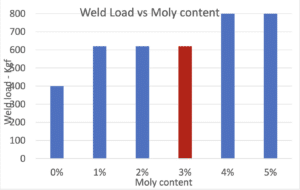

A recent internal study on TotalEnergies MULTIS MINE lithium grease showed that with the right mix of EP and anti-wear additives, three per cent of MoS2 is largely sufficient to ensure a result of 620kg on the 4-ball weld load test – ASTM D 2596 and keep the wear scar low.
Adding more than four per cent allows grease to potentially reach 800kg and can be considered as extra safety layer. However, this is clearly over engineering as this level of performance is not required in this type of mining heavy-duty equipment.
Performance
Performances that are mentioned on a technical data sheet (TDS) are not always directly transferable to the equipment. For instance, if the automatic greasing system is injecting grease in the application twice as often than the necessary amount, long lasting EP and anti-wear protection are irrelevant. The grease will be replaced long before these additives are depleted.
TotalEnergies greases for mining
TotalEnergies supply, for pins and bushes and swing gear applications, its dedicated Multis Mine grease range. Following many decades of experience, this range has been developed to answer all requirements from OEM and mining companies. Information on this range can be found in the following table.
